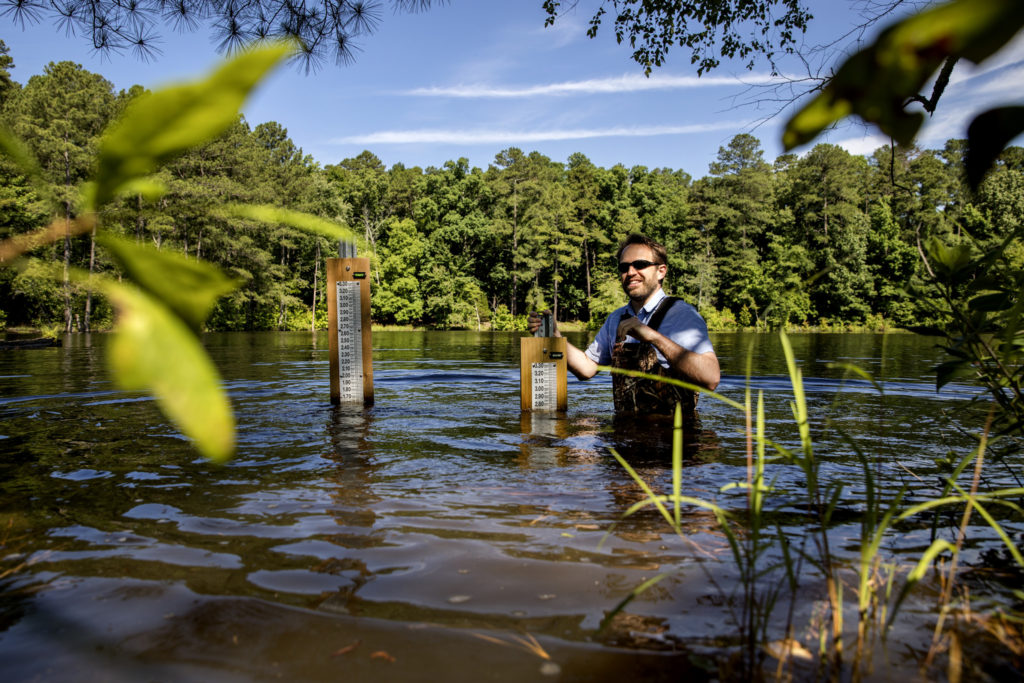UNC-Chapel Hill scientist Laura Moore, associate professor in the department of geological sciences, served on the National Academies committee that released the report.

Improved understanding of the coupled natural-human coastal system will help promote resilience of coastal communities and ecosystems under rapidly changing environmental conditions and support informed decision-making, according to a new report from the National Academies of Sciences, Engineering, and Medicine.
The physical and ecological systems, people, and economy in the Gulf Coast are inextricably linked. The natural system includes processes such as sea-level rise, subsidence, storm surges and flooding, sediment management, marsh and wetland loss, and conservation and restoration activities. The human system encompasses land use and coastal development, adaptation, and migration or relocation. The interactions and feedbacks between the natural and human systems are what make up the coupled system.
The committee that carried out the study and wrote the report identified three critical areas of research that could address gaps in high-priority scientific knowledge, helping to inform decision-making and research planning related to the strategic initiatives of the National Academies’ Gulf Research Program (GRP). Laura Moore, a coastal researcher in UNC’s College of Arts & Sciences, was among 12 committee members who authored the report.
- How will coastal landforms and coastal ecosystems along the Gulf Coast respond to rapidly changing conditions (both natural and human-induced), especially given the expectation for continued relative sea-level rise acceleration?
- How will human settlement and economic activity along the Gulf Coast respond to evolving coastal landforms and ecosystems under rapidly changing conditions?
- How can improved understanding of both near- and long-term evolution of the Gulf Coast’s coupled natural-human system be applied to inform stakeholder decisions made at local, state, and regional levels? How will the coupled system evolve when decision-making is updated as scientific understanding advances?
The report recommends that GRP create an integrated research program that focuses on understanding of the evolution of the coupled coastal system. This research program should support collaborative, multidisciplinary research teams; encourage comprehensive, Gulf-wide integrated observational and modeling efforts; offer research opportunities that are longitudinal and multidecadal; and deliver easily accessible observational data and model results. Such an effort has the potential to positively transform living along the Gulf Coast and in coastal zones around the world by informing decisions from local to federal levels, says the report.
Turning research products into actionable policies for a re-envisioned future Gulf entails communication and collaboration between scientists and stakeholders such as city planners or emergency managers, but current barriers prevent effective communication. The report identifies opportunities to overcome these barriers, such as targeted funding that would allow stakeholders to better interpret and use scientific information, creating an incentive structure that fosters information sharing between the energy industry and other stakeholders, and encouraging scientists to engage substantially with stakeholders from product development to delivery stage.
Such a research program will enable significant advancement toward understanding the feedbacks and interactions among the physical, ecological, and human components and the resulting evolution of the coupled system along the Gulf Coast, in the context of both human and climate drivers.
The report recommends focusing planning efforts on a near-decadal scale (10-50 years) and a decadal-century scale (50-200 years). These periods encompass the time scales of the physical and ecological drivers of anticipated changes and the motivating factors for human response and decision-making.
The study was sponsored by the Academies’ Gulf Research Program, which was established at the request of the U.S. government as part of legal settlements in the aftermath of the Deepwater Horizon oil spill. The National Academies of Sciences, Engineering, and Medicine are private, nonprofit institutions that provide independent, objective analysis and advice to the nation to solve complex problems and inform public policy decisions related to science, technology, and medicine. They operate under an 1863 congressional charter to the National Academy of Sciences, signed by President Lincoln. For more information, visit http://national-academies.org. A committee roster follows.




